Rugby League
Source: Hoch, Isabel. 2008. Pages 91, 109, 124, 153
Football in Barcaldine goes back to 28 April 1892 with the formation of the Artesian Football Club. On 2 July 1892, the first football excursion train ran between Barcaldine and Longreach. The townspeople took the opportunity to see the new town on the Thomson. The Artesian Football Club had T. J. Ryan as their Patron. Soon afterwards Ryan became the first man ever to enter Parliament from central western Queensland. George Page Shakspeare of the Shakspeare Hotel was the President of the club, and E. Savage the secretary. A second club, the Barcoo Rangers, was formed two weeks after in May 1892, six days after Longreach kicked off with their clubs, the Blues and Stripes. The first clash between Barcaldine and Longreach was played on a Saturday afternoon, the 12 June 1892 on the flat on the left of the present Aramac crossing on the north side.
The visitors arrived by special train. Longreach jerseys were blue and white, the home team were black and god. The match kicked off at 3:30 pm, with Longreach winning two-nil (two points for a try). The team was then escorted back to town by the Barcaldine Band. The return game was played in Longreach on 3 July 1892. A try was awarded to Longreach by the referee that Barcaldine disputed, leading to a mid-field conference. The Longreach captain, Gavin, felt the middle man was a bit ‘tough’ on Barcaldine, and asked the ref to allow the try. The ref wouldn’t, and left the field, a linesman taking over. As he walked on, the players walked off. Thus the return game in football’s first year in the central west came to an abrupt end, Longreach leading 15-2 at the time.
Organisation of the games was not the best in those days. On 5 June 1902, Longreach arrived by train for a match, taking the home side by surprise as they knew nothing of the challenge. Barcaldine managed to muster a team to play and the score was a nil-all draw. Shortly after, in Longreach, Barcaldine and Longreach players had their names taken on the file by the police. Their crime had been playing football on a Sunday. It appears no action was taken in the end.
The rugby league football code was introduced into Barcaldine after the first world war, the first game being played in 1919. Rugby union was played until 1915 when war ended the competition for four years.
The first rugby league game in Barcaldine was played on 4 May 1919 when Shamrocks played Natives. Barcaldine and Longreach met for their first game on 23 August 1919 at Barcaldine, the home town winning 8-7, with Bill Mornet scoring the first points, while Jack McQuaid kicked the first goal. Longreach arrived that day by tain packed to capacity, the players being welcomed at Hawthorns Cafe which was the custom in those days. The return game was played in Longreach four weeks later, Longreach winning 15-11. Darby Devery, full back, scored two tries and captain Mick O’Hanlon scored one and McQuaid kicked a goal accounting for the visitors’ 11 points.
Barcaldine was the first to have a grass playing field, and the first to have a timing clock at the grounds. The clock was donated by A & K Jackson and Pat and Clare Ogden at a cost of $800, installed on 20 March 1975.
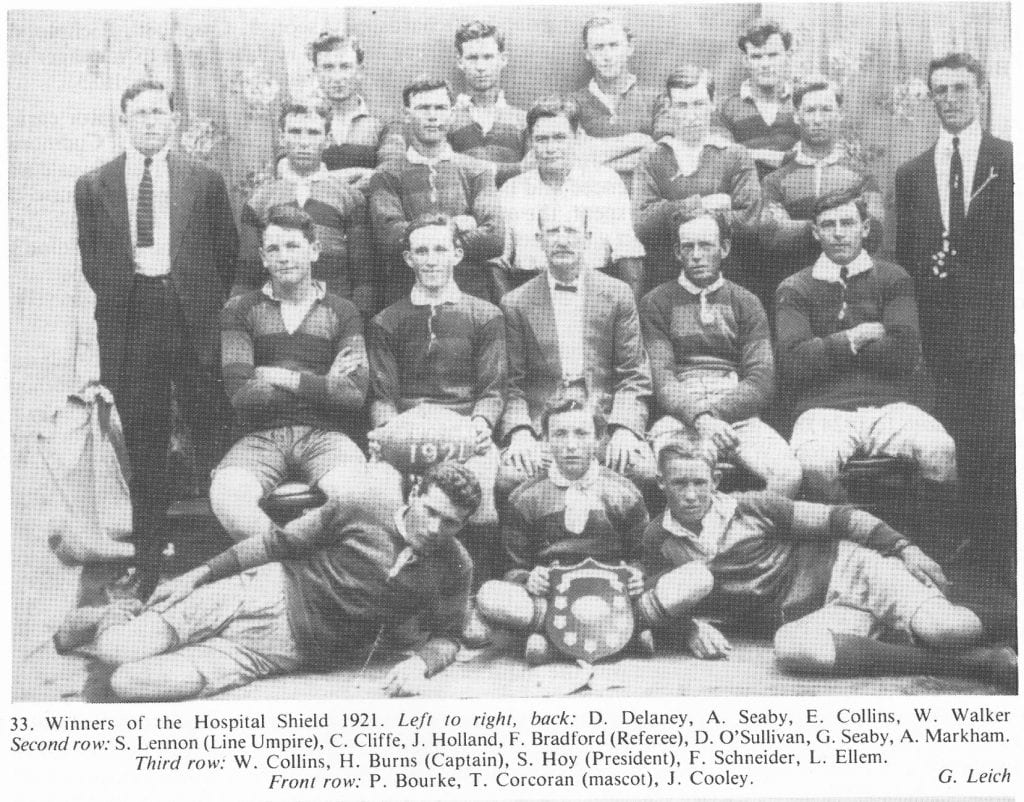


Solley Cup
Intertown rivalry became intense when the contest began for the H. S. Solley cup in 1920. The competition towns were Barcaldine, Longreach and Emerald. Winton and Blackall hadn’t fielded teams at that time. The cup, presented by a businessman of Longreach, was to be retained by the first town to win it three times. By 1927 Barcaldine and Longreach had each won twice and excitement for the deciding fixture reached fever pitch. Despite drought conditions, an enormous crowd gathered in Barcaldine. Cars brought visitors from Cloncurry, Hughenden, Winton and Clermont and a special train from Longreach was packed by hundreds of spectators for the July match.
Barcaldine had imported a paid coach, Eric Frauenfelder, and the crowd went wild with delight when he guided the home team to victory. A ball in Forester’s Hall and a victory procession of several hundred townspeople kept celebrations going for days while the Champion ran its largest ever headlines – ‘Barcaldine Tastes Fruits of Victory. Longreach Sucks a Lemon’. Longreach, however, refused to part with the cup, claiming that Barcaldine had used a Brisbane player, W. McCook under the name of Graham, and a protest to the Central Western Rugby League was upheld. Barcaldine countered with a protest to Central Queensland Rugby League which awarded the cup back to Barcaldine as McCook had been cleared to play. Longreach then took the matter to Queensland Rugby League which upheld Barcaldine’s claim and the cup was installed at the Town Hall to display the Solley Cup and other trophies.
Moscrip Trophy
Rugby League teams played for a J. Moscrip challenge trophy in the central west from 1950.
The local donor, ‘Sonny’ Moscrip saw his cup won by Barcaldine in its first year and held in the town from 1962 to 1967. Barcaldine won it again in 1983. The Barcaldine Rugby League team became the ‘Sand Goannas’, winning the Moscrip trophy 17 times.
The Barcaldine Team seen here with the Moscrip Trophy. Back row (L-R): J. Teasdale (strapper), A. Scott, P. Maher, N. Innocend, G. McInnes, J. Grant, W. Scott, J. Stewart. Second row (L-R): J. Arthur, B. Jessberg, T. Sleeman, W. Gill (Manager & Coach), A. Whitfield, K. Boustead, T. Duffy, D. Alexander. Front row (L-R): N. Tighe, R. Burns.
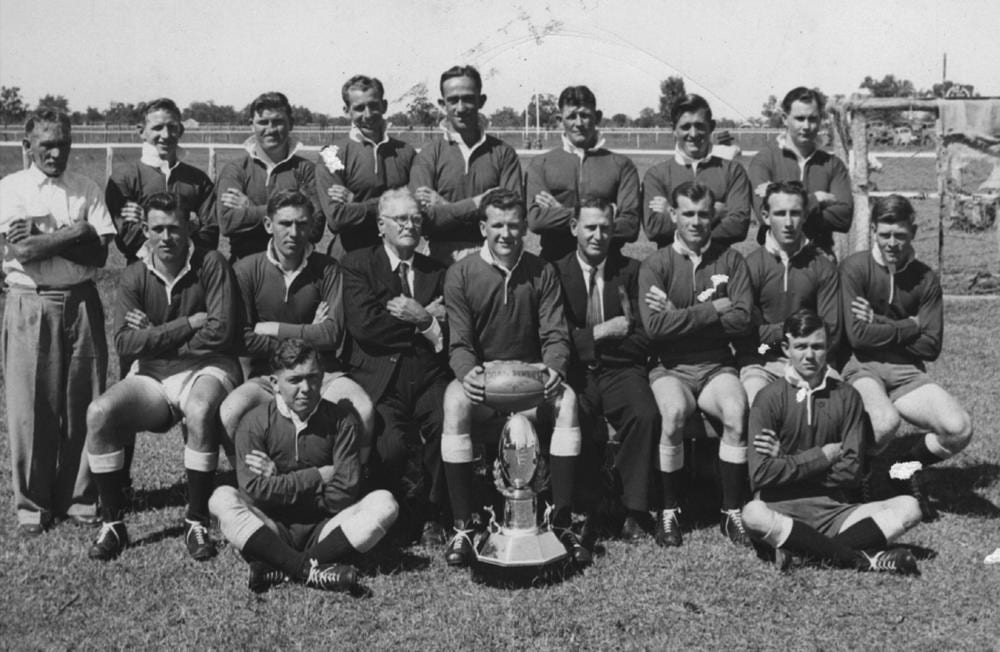
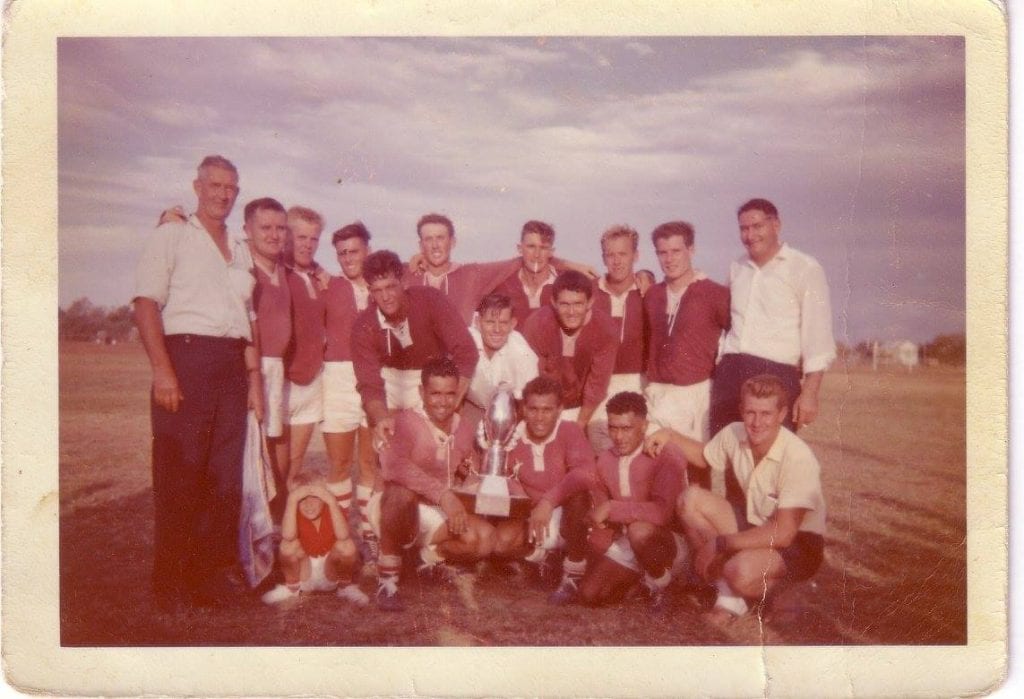
International Games
International games were played at the local grounds by visiting Kiwis in 1952 and a French team in 1955.

‘The Barcaldine Rugby League has elected Mr Ted Seaby as president. Other officials elected for the season are: Delegates to the CWRL, Messrs E. Seaby and R. Fraser; selector to the CWRL, Mr Seaby; league selectors, Messrs Seaby, W. Thomas and G. Plumb. A proposed scheme for improving the night training facilities and providing better lighting at the grounds was put before the council, but it was re- jected on the grounds that the erection of poles to carry the lights would interfere with the use of the grounds for horse events and cricket. The coach for this season, Mr Bob Campbell, has arrived. The first games will be played on Sunday. March 30, when it is expected that six teams will take the field’. (Morning Bulletin, 25 March 1952)
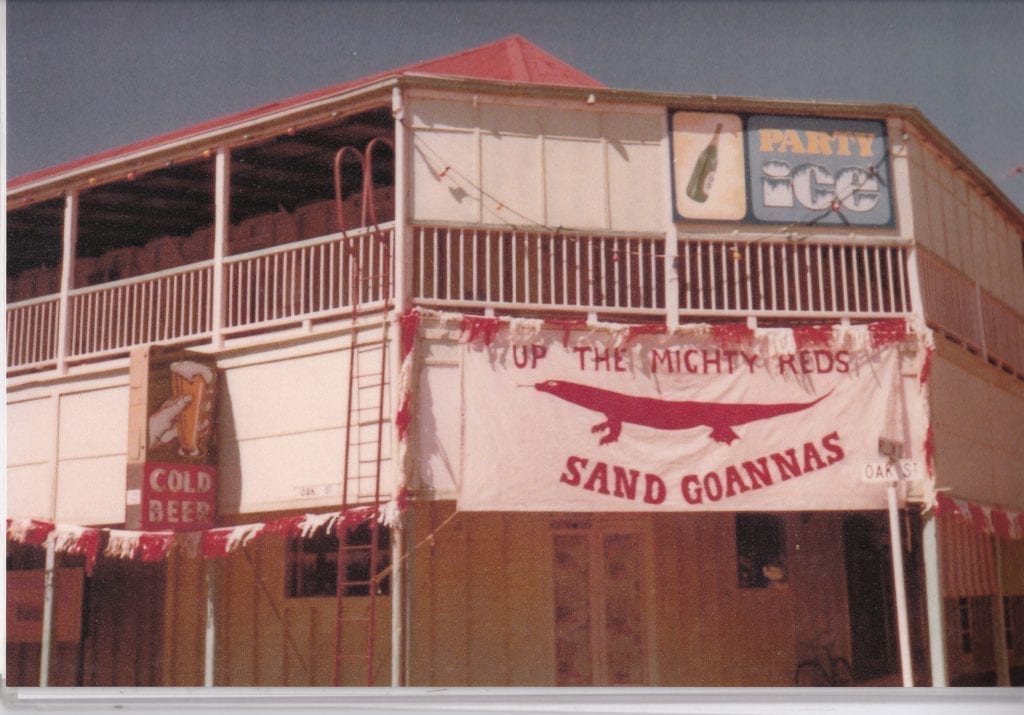

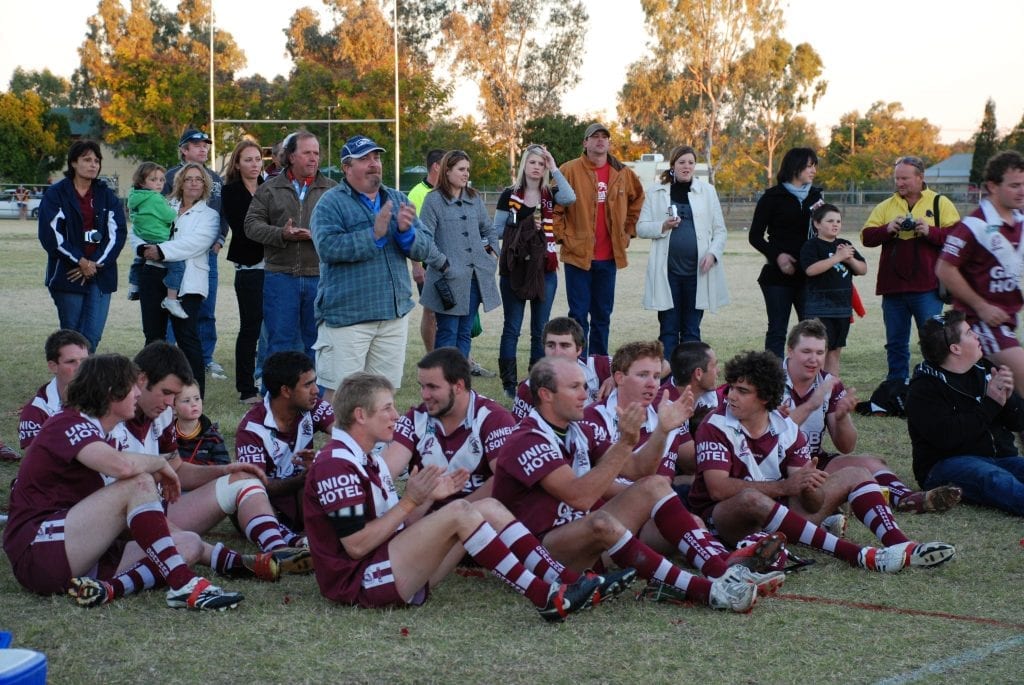
Football's Peter Pan
The Peter Pan of Western Queensland football must surely be William (Cuddy) Lennon of Barcaldine. Cuddy, as most western football fans called him – although there were times when Longreach called him something else – started his football career on 23 August 1919 and played until the Gordon Gibson Cup fixture on 21 August 1938.
He had the unique record of having represented Barcaldine in every Solley Cup game, that hectic period of western football when everything but the kitchen sink was used in football. He held the record for representing Barcaldine in every year he played football. He also represented the Central West in every match in those 20 years.
There are some tales of Cuddy and football, and some are printable. Bonnie McQuaid told the tale: Cuddy and I were playing with Barcaldine against Blackall a long time ago. The playing arrangements were a little crude. In fact, they used mounted police to keep the crowd off the field. Cuddy was playing his usual hard game in the forwards. He staggered out of a pretty hectic ruck near the side line and caught sight of a mounted copper on the field. ‘Bonnie’, he said, ‘the b…s are playing us on horseback, but that doesn’t matter. Come on’, and he tackled the horse.
Then there was the time he was watching two teams of schoolboys playing. He said to young Hughie Lennon, ‘Hughie, my boy, get into that ruck. If you come out with a head under one arm and a mouth full of ear I’ll coach you’.
Western football is better for players like Cuddy Lennon. (Source: Barcaldine Centenary Rugby League Program, 1986)
